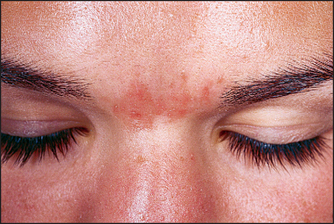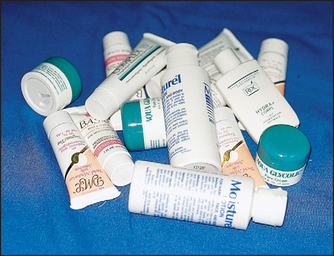Chapter 28 Acne Cosmeceutical Myths
The purpose of this chapter is to dispel some of the commonly held myths regarding acne cosmeceuticals. These myths may be held by dermatologists and patients alike. They are perpetuated by the popular press and exuberant marketing efforts that present ideas or concepts that seem to make common sense but cannot be verified by the scientific method. This chapter presents the material by first stating the acne cosmeceutical myth and subsequently exploring where the truth may lie. The acne myths discussed were collected from the authors and editors of this text by canvassing dermatologists in their respective practices and dermatology training programs. It is hoped that this material serves to further cosmeceutical science by providing concise analyses to frequent acne misconceptions.
COSMECEUTICALS DO NOT PRODUCE ACNE IF LABELED NONCOMEDOGENIC AND NONACNEGENIC
Similar to hypoallergenic, noncomedogenic and nonacnegenic are marketing claims carrying no implied regulation (Fig. 28.1). They were also developed to create a new consumer image for cosmetic lines designed to minimize acne. In order to make the claim noncomedogenic, rabbit ear or human comedogenicity testing should be undertaken. Both the animal and the human model are based on the presence of new comedone formation after the exposure of skin to the finished cosmetic. Human testing is considered to be more accurate, but the results are highly dependent on the skill of the contract testing laboratory. Acnegenic claims are based on human use testing and the evaluation of volunteer subjects following product use for an increase in the presence of acne. Many manufacturers, however, make noncomedogenic and nonacnegenic claims based on the safety profiles of the individual ingredients in the formulation. This is inaccurate. Noncomedogenic and nonacnegenic claims should be made based on clinical testing of the finished formulation. The dermatologist should still consider all products labeled noncomedogenic or nonacnegenic as problematic.
MINERAL OIL IS COMEDOGENIC
Mineral oil is one of the most common ingredients in skin care products and colored cosmetics (Fig. 28.2). It is a lightweight inexpensive oil that is odorless and tasteless. One of the common concerns regarding the use of mineral oil is its presence on several lists of comedogenic substances. These comedogenic lists were developed many years ago, yet remain frequently quoted in the dermatologic literature. There are several important points to consider. First, there are different grades of mineral oil. There is industrial grade mineral oil, which is used as a machine lubricant, that is not of the purity required for skin application. Cosmetic grade mineral oil is the purest form without contaminants. Industrial grade mineral oil may be comedogenic, but cosmetic grade mineral oil is not. Quality manufacturers only purchase quality products from quality suppliers who guarantee the quality of the materials they provide. I believe that cosmetic grade mineral oil is noncomedogenic and I have never found it to be comedogenic in any of the testing I have performed for the skin care industry.









